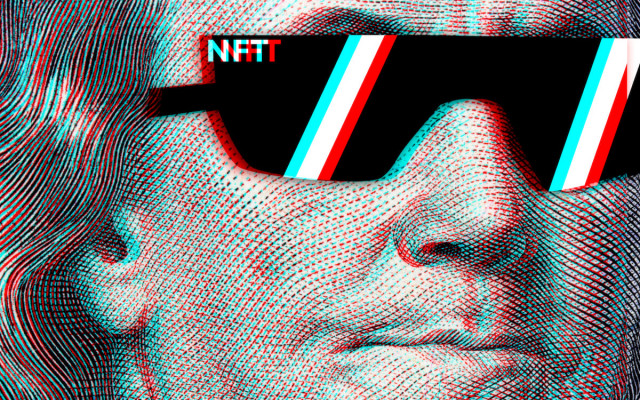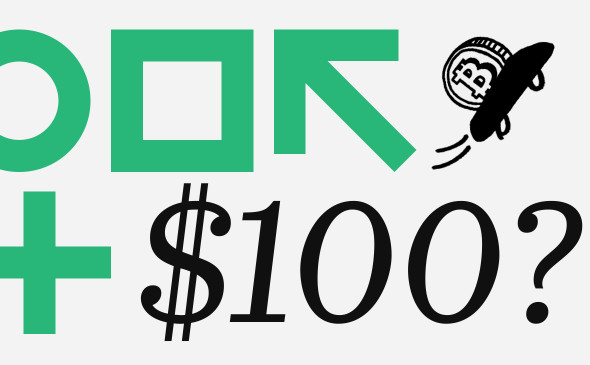Unfriendly, unsafe and meaningless: who hates NFT and for what
The amount of transactions on NFT reaches tens of millions of dollars. But many owners of digital assets (for example, artists) refuse to use them, and there are several good reasons for this.
NFT (non-fungible token) is a unique record on the blockchain that can be created for almost any digital object. Since this record (token, token, certificate - in Russian-language sources NFT is called differently) is unique and indivisible, it is convenient to use it for the sale of digital assets. Most often, they sell art objects, but the subject of a deal with the NFT can be anything, for example, the first tweet of Twitter founder Jack Dorsey or the original handwritten script of "Pulp Fiction".Ecological problems
The first thing that NFT sellers are accused of is environmental damage. The certificate of uniqueness of a digital object is stored in the blockchain, and any action with it requires a large amount of energy for calculations. As Memo Acten, an artist and creative technologist from London, writes in his blog, one transaction in the Ethereum system, which today is most often used for transactions with NFT, consumes an average of 35 kW – as much as the average resident of the European Union spends in four days.
Acten calculated the estimated energy expenditure and carbon footprint for the average artist selling works through NFT. It turned out to be 260 MW and 160 tons of CO emissions2 in six months.
It is for this reason that the French artist Joanie Lemercier refused to work with NFT, which he announced on the official website of his studio. In 2020, he sold six of his works on one of the platforms and, according to his own calculations, spent as much energy in 10 seconds as his entire studio in two years of work.
And the American digital artist Beeple, who sold a digital painting at Christie's for $ 69 million, decided to try to compensate for the negative impact of the sale of his works. He told The Verge that all of his NFTs will now have a neutral or even negative carbon footprint. To achieve this, it will need to invest part of the proceeds in "green" technologies.
There are several solutions to the problem of energy intensity of transactions with NFT.
First, you can transfer the platforms to another algorithm of work. There are two algorithms for the operation of networks: proof-of-work and proof-of-stake. If you do not go into technical details, we can say that the first is more decentralized, but also more energy-intensive, and the second has elements of centralization (from which blockchain users are trying to get away), but it consumes much less energy. Now in Europe, they are thinking about banning proof-of-work mining altogether: Eric Tedeen, vice-president of the European Securities and Financial Markets Authority, said this in an interview with the Financial Times.
The second possible solution to the problem is the "second layer" add-in of the process. In this case, settlements between the buyer and seller are conducted through a separate channel outside the main blockchain network, and only the final results of the transaction are transmitted to the core network. This significantly reduces the number of energy-intensive calculations.
Another option is the transition to renewable energy sources for computers included in the blockchain. However, while all electricity has not become "green", this for the most part means only a redistribution of capacity: computers and servers can "switch" to wind turbines and solar panels, but for other tasks non-ecological energy will still be used.
Legal and technical difficulties
Environmental issues aren't the only thing that bothers users about using NFT. Since the phenomenon is very young, a large number of legal and technical problems are still associated with it.
The first is that the purchase of NFT does not prevent other people from using the object to which the token is attached. Let's say you bought a digital painting using NFT. You have a description of it, a link to the file and a certificate of uniqueness, but anyone can download it. One possible solution is to encrypt data, but encryption in the blockchain is not a trivial task.
The second problem is that anyone can take a picture on the Internet, assign it an NFT token and sell it. The authors themselves are often not asked.
"I searched for the name to make sure my work wasn't stolen and turned into NFT, and of course – my old drawing from DeviantArt was found on the main page of the NFT collection card site. How is this even allowed...", – complained on Twitter artist Devin El Kurtz. And game developer Chucklefish told followers, "If you see art from our games on NFT sites, it's 100% stolen."
Thirdly, the security of NFT is also questionable: this is due to possible hacker attacks and questions about the reliability of servers (however, these problems are typical for any digital property).
All these factors give opponents of NFT a reason to say that this is a toy for the rich, having value only in the eyes of the buyer and at the same time damaging the environment. But, judging by the multibillion-dollar trading turnover of NFT-sites, this phenomenon has already firmly entered our lives - and we can only hope that new technical solutions will make it more reliable and environmentally friendly.




Comments
Post a Comment